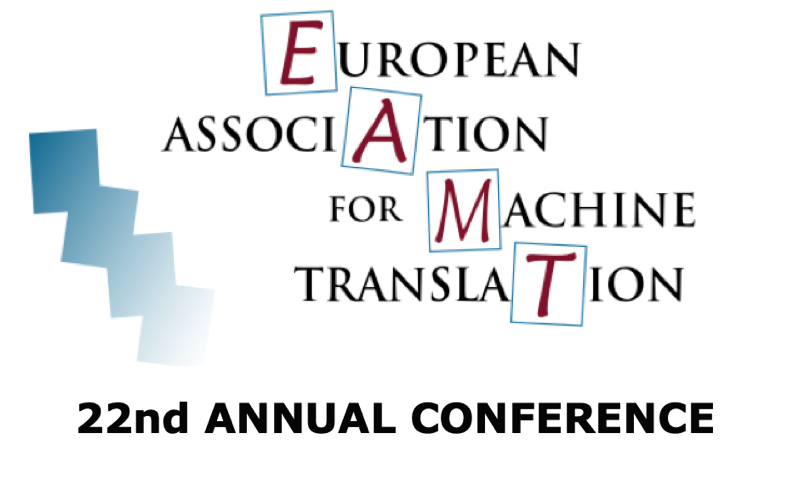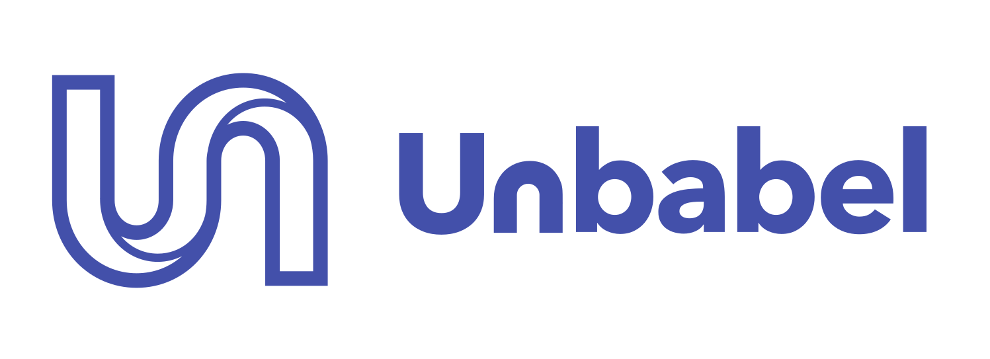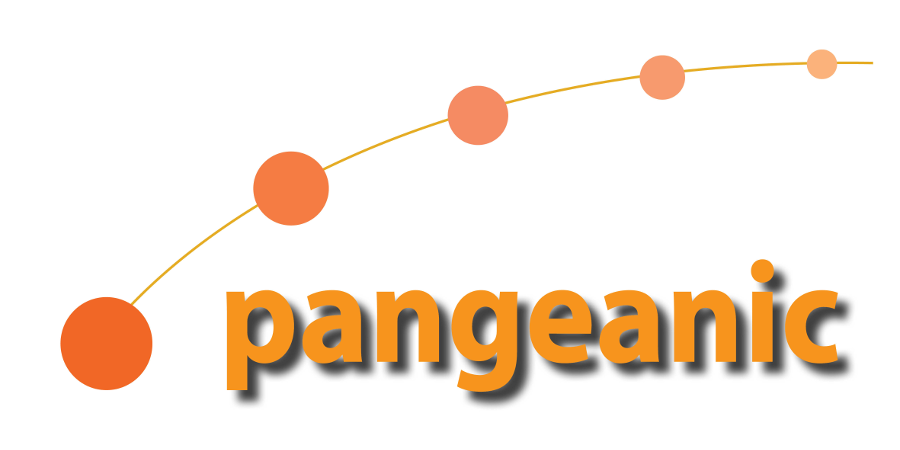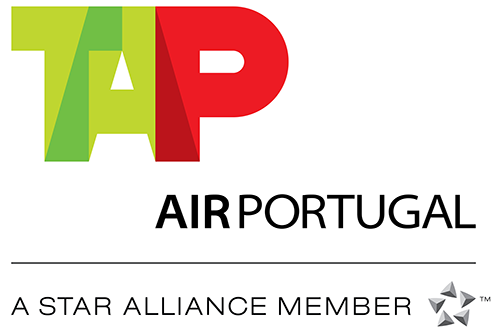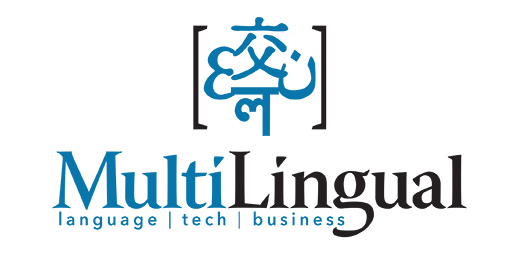| Tuesday, 3rd November |
| 9:00–09:30 |
Opening of the Conference |
| 09:30–10:00 |
Lukas Fischer and Samuel Läubli.
“What's the Difference Between Professional Human and Machine Translation? A Blind Multi-language Study on Domain-specific MT” (research track - chaired by Marco Turchi) [video] |
| 10:00–10:30 |
Maarit Koponen, Umut Sulubacak, Kaisa Vitikainen and Jörg Tiedemann.
“MT for subtitling: User evaluation of post-editing productivity” (research track - chaired by Marco Turchi) [video] |
| 10:30–11:00 |
Allen Antony, Arghya Bhattacharya, Jaipal Goud and Radhika Mamidi.
“Leveraging Multilingual Resources for Language Invariant Sentiment Analysis” (research track - chaired by Marco Turchi) [video] |
| 11:00–11:30 |
Coffee Break |
| 11:30–12:00 |
Tom Kocmi and Ondřej Bojar.
“Efficiently Reusing Old Models Across Languages via Transfer Learning” (research track - chaired by Amin Farajian) |
| 12:00–12:30 |
Yunsu Kim, Miguel Graça and Hermann Ney.
“When and Why is Unsupervised Neural Machine Translation Useless?” (research track - chaired by Amin Farajian) [video] |
| 12:30–14:00 |
Lunch Break |
| 14:00–15:00 |
Barry Haddow.
“The WMT Shared Tasks” (session chaired by Ondřej Bojar) |
| 15:00–15:30 |
Best Thesis Award (session chaired by Carol Scarton)
Felix Stahlberg. “The Roles of Language Models and Hierarchical Models in Neural Sequence-to-Sequence Prediction” [video]
|
| 15:30–16:30 |
Poster Session (research and user tracks - part 1 - chaired by Helena Moniz)
1 - Yuying Ye and Antonio Toral. “Fine-grained Human Evaluation of Transformer and Recurrent Approaches to Neural Machine Translation for English-to-Chinese” [video]
2 - Maciej Modrzejewski, Miriam Exel, Bianka Buschbeck, Thanh-Le Ha and Alexander Waibel. “Incorporating External Annotation to improve Named Entity Translation in NMT” [video]
3 - Víctor M. Sánchez-Cartagena, Mikel L. Forcada and Felipe Sánchez-Martínez. “A multi-source approach for Breton–French hybrid machine translation” [video]
4 - Lukas Edman, Antonio Toral and Gertjan van Noord. “Low-Resource Unsupervised NMT: Diagnosing the Problem and Providing a Linguistically Motivated Solution” [video]
5 - António Góis, Kyunghyun Cho and André Martins. “Learning Non-Monotonic Automatic Post-Editing of Translations from Human Orderings” [video]
6 - António Lopes, M. Amin Farajian, Rachel Bawden, Michael Zhang and André T. Martins. “Document-level Neural MT: A Systematic Comparison” [video]
7 - Natália Resende, Benjamin Cowan and Andy Way. “MT syntactic priming effects on L2 English speakers” [video]
8 - Nora Aranberri. “With or without you? Effects of using machine translation to write flash fiction in the foreign language” [video]
9 - Takeshi Hayakawa and Yuki Arase. “Fine-Grained Error Analysis on English-to-Japanese Machine Translation in the Medical Domain” [video]
10 - Minghan Wang, Hao Yang, Ying Qin, Shiliang Sun and Yao Deng. “Unified Humor Detection Based on Sentence-pair Augmentation and Transfer Learning” [video]
11 - Tharindu Ranasinghe, Constantin Orasan and Ruslan Mitkov. “Intelligent Translation Memory Matching and Retrieval with Sentence Encoders” [video]
|
| 16:30–17:30 |
Poster Session (research and user tracks - part 2 - chaired by Maja Popovic)
1 - Kamal Kumar Gupta, Rejwanul Haque, Asif Ekbal, Pushpak Bhattacharyya and Andy Way. “Modelling Source- and Target- Language Syntactic Information as Conditional Context in Interactive Neural Machine Translation” [video]
2 - Alessandra Rossetti, Sharon O'Brien and Patrick Cadwell. “Comprehension and Trust in Crises: Investigating the Impact of Machine Translation and Post-Editing” [video]
3 - Hao Yang, Minghan Wang, Ning Xie, Ying Qin and Yao Deng. “Efficient Transfer Learning for Quality Estimation with Bottleneck Adapter Layer” [video]
4 - Frederic Blain, Nikolaos Aletras and Lucia Specia. “Quality In, Quality Out: Learning from Actual Mistakes” [video]
5 - Daniel Marín Buj, Daniel Ibáñez García, Zuzanna Parcheta, and Francisco Casacuberta. “NICE: Neural Integrated Custom Engines” [video]
6 - María Concepción Laguardia. “Persistent MT on software technical documentation – a case study” [video]
7 - Georg Kirchner. “Insights from Gathering MT Productivity Metrics at Scale” [video]
8 - Gema Ramírez-Sánchez, Jaume Zaragoza-Bernabeu, Marta Bañón and Sergio Ortiz Rojas. “Bifixer and Bicleaner: two open-source tools to clean your parallel data” [video]
9 - Sahil Manchanda and Galina Grunin. “Domain Informed Neural Machine Translation: Developing Translation Services for Healthcare Enterprise” [video]
10 - Miguel Domingo, Mercedes García-Martínez, Álvaro Peris, Alexandre Helle, Amando Estela, Laurent Bié, Francisco Casacuberta and Manuel Herranz. “A User Study of the Incremental Learning in NMT” [video]
11 - Jonathan Mutal, Johanna Gerlach, Pierrette Bouillon and Hervé Spechbach. “Ellipsis Translation for a Medical Speech to Speech Translation System” [video]
12 - Anna Zaretskaya, José Conceicão and Frederick Bane. “Estimation vs Metrics: is QE Useful for MT Model Selection?” [video]
|
| Wednesday, 4th November |
| 9:30–10:30 |
Keynote speech: Lucia Specia, Imperial College and Sheffield University (session chaired by Mikel Forcada) |
| 10:30–11:30 |
Poster Session (project/product track - part 1 - chaired by Jorg Tiedemann)
1 - Felipe Soares, Anna Zaretskaya and Diego Bartolome. “QE Viewer: an Open-Source Tool for Visualization of Machine Translation Quality Estimation Results”
2 - Sheila Castilho. “Document-Level Machine Translation Evaluation Project: Methodology, Effort and Inter-Annotator Agreement” [video]
3 - Felix Hieber, Tobias Domhan, Michael Denkowski and David Vilar. “Sockeye 2: A Toolkit for Neural Machine Translation” [video]
4 - Amir Kamran, Dace Dzeguze, Jaap van der Meer, Milica Panic, Alessandro Cattelan, Daniele Patrioli, Luisa Bentivogli and Marco Turchi. “CEF Data Marketplace: Powering a Long-term Supply of Language Data” [video]
5 - Maja Popović. “QRev: Machine Translation of User Reviews: What Influences the Translation Quality?” [video]
6 - Ondřej Bojar, Dominik Macháček, Sangeet Sagar, Otakar Smrž, Jonáš Kratochvíl, Ebrahim Ansari, Dario Franceschini, Chiara Canton, Ivan Simonini, Thai-Son Nguyen, Felix Schneider, Sebastian Stücker, Alex Waibel, Barry Haddow, Rico Sennrich and Philip Williams. “ELITR: European Live Translator” [video]
7 - Andy Way, Petra Bago, Jane Dunne, Federico Gaspari, Andre Kåsen, Gauti Kristmannsson, Helen McHugh, Jon Arild Olsen, Dana Davis Sheridan, Páraic Sheridan and John Tinsley. “Progress of the PRINCIPLE Project: Promoting MT for Croatian, Icelandic, Irish and Norwegian” [video]
8 - Antoni Oliver. “MTUOC: easy and free integration of NMT systems in professional translation environments” [video]
9 - Celia Rico, María del Mar Sánchez Ramos and Antoni Oliver. “INMIGRA3: building a case for NGOs and NMT” [video]
10 - Ēriks Ajausks, Victoria Arranz, Laurent Bié, Aleix Cerdà-i-Cucó, Khalid Choukri, Montse Cuadros, Hans Degroote, Amando Estela, Thierry Etchegoyhen, Mercedes García-Martínez, Aitor Garcı́a-Pablos, Manuel Herranz, Alejandro Kohan, Maite Melero, Mike Rosner, Roberts Rozis, Patrick Paroubek, Artūrs Vasiļevskis and Pierre Zweigenbaum. “The Multilingual Anonymisation Toolkit for Public Administrations (MAPA) Project” [video]
11 - Joachim Van den Bogaert, Heidi Depraetere, Sara Szoc, Tom Vanallemeersch, Lucia Specia, Julia Ive and Maxim Khalilov. “APE-QUEST: A Quality Gate for Routing MT” [video]
|
| 11:30–12:30 |
Poster Session (project/product track - part 2 - chaired by Fabio Kepler)
1 - Joachim Van den Bogaert, Tom Vanallemeersch and Heidi Depraetere. “MICE: a middleware layer for MT” [video]
2 - Laurent Bié, Aleix Cerdà-i-Cucó, Hans Degroote, Amando Estela, Mercedes García-Martínez, Manuel Herranz, Alejandro Kohan, Maite Melero, Tony O’Dowd, Sinéad O’Gorman, Mārcis Pinnis, Roberts Rozis, Riccardo Superbo and Artūrs Vasiļevskis. “Neural Translation for the European Union (NTEU) Project” [video]
3 - Jörg Tiedemann and Santhosh Thottingal. “OPUS-MT — Building open translation services for the World” [video]
4 - Joachim Van den Bogaert, Arne Defauw, Frederic Everaert, Koen Van Winckel, Alina Kramchaninova, Anna Bardadym, Tom Vanallemeersch, Pavel Smrž and Michal Hradiš. “OCR, Classification & Machine Translation (OCCAM)” [video]
5 - Joachim Van den Bogaert, Arne Defauw, Sara Szoc, Frederic Everaert, Koen Van Winckel, Alina Kramchaninova, Anna Bardadym and Tom Vanallemeersch. “CEFAT4Cities, a Natural Language Layer for the ISA2 Core Public Service Vocabulary” [video]
6 - Lieve Macken, Margot Fonteyne, Arda Tezcan and Joke Daems. “Assessing the Comprehensibility of Automatic Translations (ArisToCAT)” [video]
7 - Judith Klein and Giorgio Bernardinello. “Let MT simplify and speed up your alignment for TM creation” [video]
8 - Reinhard Rapp and George Tambouratzis. “An Overview of the SEBAMAT Project”
9 - André Filipe Torres Martins, lad Niculae, Erick Fonseca, Ben Peters, Gonçalo Correia, Tsvetomila Mihaylova, Marcos Treviso, Pedro Martins. “DeepSPIN: Deep Structured Prediction for Natural Language Processing” [video]
10 - André Filipe Torres Martins, João Graça, Paulo Dimas, Helena Moniz and Graham Neubig. “Project MAIA: Multilingual AI Agent Assistant” [video]
11 - Natália Resende and Andy Way. “MTrill project: Machine Translation impact on language learning” [video]
|
| 12:30–14:30 |
Lunch Break |
| 14:30–15:00 |
Julia Kreutzer, Nathaniel Berger and Stefan Riezler.
“Correct Me If You Can: Learning from Error Corrections and Markings” (research track - chaired by Andy Way) [video] |
| 15:00–15:30 |
Antonio Toral.
“Reassessing Claims of Human Parity and Super-Human Performance in Machine Translation at WMT 2019” (research track - chaired by Andy Way) [video] |
| 15:30–16:00 |
Jihyung Moon, Hyunchang Cho and Eunjeong L. Park.
“Revisiting Round-trip Translation for Quality Estimation” (research track - chaired by Andy Way) [video] |
| 16:00–16:30 |
Coffee Break |
| 16:30–17:30 |
EAMT General Assembly (session chaired by Mikel Forcada) |
| Thursday, 5th November |
| 09:30–10:00 |
Miriam Exel, Bianka Buschbeck, Lauritz Brandt, and Simona Doneva.
“Terminology-Constrained Neural Machine Translation at SAP” (user track - chaired by Mary Nurminen) [video] |
| 10:00–10:30 |
Felipe Sanchez-Martınez, Vıctor M. Sanchez-Cartagena, Juan Antonio Perez-Ortiz, Mikel L. Forcada, Miquel Esplà-Gomis, Andrew Secker, Susie Coleman and Julie Wall.
“An English-Swahili parallel corpus and its use for neural machine translation in the news domain” (user track - chaired by Mary Nurminen) [video] |
| 10:30–11:00 |
Karolina Stefaniak.
“Evaluating the usefulness of neural machine translation for the Polish translators at the European Commission” (user track - chaired by Mary Nurminen) [video] |
| 11:00–11:30 |
Coffee Break |
| 11:30–12:00 |
Amirhossein Tebbifakhr, Matteo Negri and Marco Turchi.
“Automatic Translation for Multiple NLP tasks: a Multi-task Approach to Machine-oriented NMT Adaptation” (research track - chaired by José Guilherme) [video] |
| 12:00–12:30 |
Yuting Zhao, Mamoru Komachi, Tomoyuki Kajiwara and Chenhui Chu.
“Double Attention-based Multimodal Neural Machine Translation with Semantic Image Regions” (research track - chaired by José Guilherme) [video] |
| 12:30–14:30 |
Lunch Break |
| 14:30–15:00 |
Mara Nunziatini and Lena Marg.
“Machine Translation Post-editing Levels: Breaking Away from the Tradition and Delivering a Tailored Service” (user track - chaired by Mary Nurminen) [video] |
| 15:00–15:30 |
Meghan Dowling, Sheila Castilho, Joss Moorkens, Teresa Lynn and Andy Way.
“A human evaluation of English-Irish statistical and neural machine translation” (translators track - chaired by Joss Morkens & Ana Guerberov) [video] |
| 15:30–16:00 |
Paula Estrella, Emiliano Cuenca, Laura Bruno, Jonathan Mutal, Sabrina Girletti, Lise Volkart and Pierrette Bouillon.
“Re-design of the Machine Translation Training Tool (MT3)” (translators track - chaired by Joss Morkens & Ana Guerberov) [video] |
| 16:00–17:30 |
Translators Track Short Presentations (chaired by Joss Morkens & Ana Guerberov)
1 - Maja Popovic. “On the differences between human translations” [video]
2 - Antoni Oliver, Sergi Alvarez and Toni Badia. “PosEdiOn: Post-Editing Assessment in PythOn” [video]
3 - Sergi Alvarez, Antoni Oliver and Toni Badia. “Quantitative Analysis of Post-Editing Effort Indicators for NMT” [video]
4 - Félix Do Carmo. “Comparing Post-editing based on Four Editing Actions against Translating with an Auto-Complete Feature” [video]
5 - Maria Stasimioti, Vilelmini Sosoni, Katia Kermanidis and Despoina Mouratidis. “Machine Translation Quality: A comparative evaluation of SMT, NMT and tailored-NMT outputs” [video]
|
| 17:30–18:00 |
Mateja Arnejšek and Alenka Unk.
“Multidimensional assessment of the eTranslation output for English–Slovene” (translators track - chaired by Joss Morkens & Ana Guerberov) [video] |
| 18:00–18:30 |
Randy Scansani and Lamis Mhedhbi.
“How do LSPs compute MT discounts? Presenting a company's pipeline and its use” (translators track - chaired by Joss Morkens & Ana Guerberov) [video] |
| 18:30–19:00 |
Closing of the Conference |
